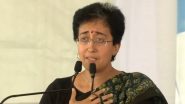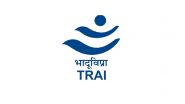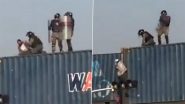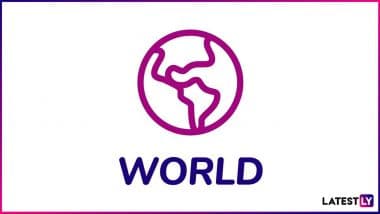Dubai, Nov 29 (AP) Iran will begin enriching uranium with thousands of advanced centrifuges at its two main nuclear facilities at Fordo and Natanz, the United Nations' nuclear watchdog said Friday, further raising tensions over Tehran's programme as it enriches at near weapons-grade levels.
The notice from the International Atomic Energy Agency (IAEA) only mentioned Iran enriching uranium with new centrifuges to 5 per cent purity, far lower than the 60 per cent it currently does — likely signaling that it still wants to negotiate with the West and the incoming administration of President-elect Donald Trump.
However, it remains unclear how Trump will approach Iran once he enters office, particularly as it continues to threaten to attack Israel amid its war on Hamas in the Gaza Strip and just after a ceasefire started in its campaign in Lebanon. Trump withdrew America from the accord in 2018, setting in motion a series of attacks and incidents across the wider Mideast.
Iran's mission to the United Nations did not immediately respond to a request for comment over the IAEA's report. Tehran had threatened to rapidly advance its programme after the Board of Governors at the IAEA condemned Iran at a meeting in November for failing to cooperate fully with the agency.
In a statement, the IAEA outlined the plans Iran informed it of, which include feeding uranium into multiple cascades of its advanced IR-2M, IR-4 and IR-6 centrifuges.
Cascades are a group of centrifuges that spin uranium gas together to more quickly enrich the uranium. Each of these advanced classes of centrifuges enrich uranium faster than Iran's baseline IR-1 centrifuges, which have been the workhorse of the country's atomic programme.
The IAEA did not elaborate on how many machines would be in each cascade but Iran has put around 160 centrifuges into a single cascade in the past.
It's unclear if Iran has begun feeding the uranium yet into the centrifuges. Tehran so far has been vague about its plans. But starting the enrichment at 5 per cent gives Tehran both leverage at negotiations with the West and another way to dial up the pressure if they don't like what they hear.
Weapons-grade levels of enrichment are around 90 per cent.
Since the collapse of Iran's 2015 nuclear deal with world powers following the US' unilateral withdrawal from the accord in 2018, it has pursued nuclear enrichment just below weapons-grade levels. US intelligence agencies and others assess that Iran has yet to begin a weapons programme.
Iran, as a signatory to the Treaty on the Non-Proliferation of Nuclear Weapons, has pledged to allow the IAEA to visit its atomic sites to ensure its programme is peaceful. Tehran also had agreed to additional oversight from the IAEA as part of the 2015 nuclear deal, which saw sanctions lifted in exchange for drastically limiting its programme.
However, for years Iran has curtailed inspectors' access to sites while also not fully answering questions about other sites where nuclear material has been found in the past after the deal's collapse.
Iranian officials in recent months, including Supreme Leader Ayatollah Ali Khamenei and reformist President Masoud Pezeshkian, had signaled a willingness to negotiate with the West. But Iran also has launched two attacks on Israel amid the war.
Kazem Gharibabadi, an Iranian diplomat, said in a post on the social platform that he met with EU diplomat Enrique Mora, criticising Europe as being “self-centred" while having "irresponsible behaviour.”
“With regard to the nuclear issue of Iran, Europe has failed to be a serious player due to lack of self-confidence and responsibility,” Gharibabadi wrote.
For his part, Mora described having a “frank discussion” with Gharibabadi and another Iranian diplomat. Those talks included “Iran's military support to Russia that has to stop, the nuclear issue that needs a diplomatic solution, regional tensions (important to avoid further escalation from all sides) and human rights,” he wrote on X. (AP)
(This is an unedited and auto-generated story from Syndicated News feed, LatestLY Staff may not have modified or edited the content body)













 Quickly
Quickly
















